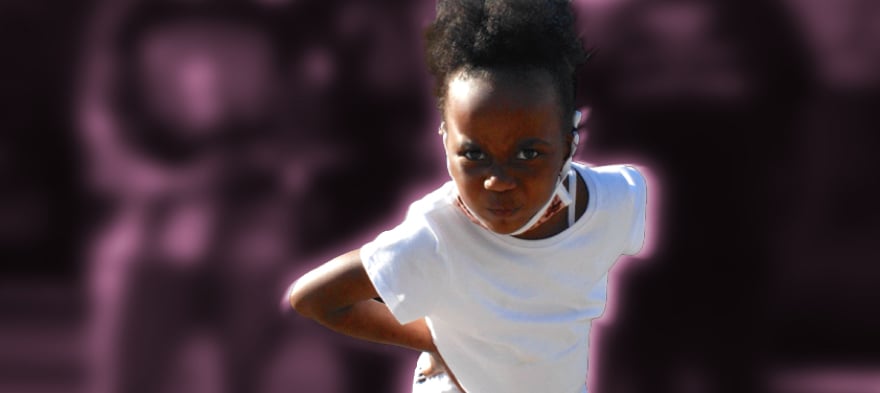
Jul 17, 2020 10:22:00 PM
by KJ Ward
“You can be anything you want to be when you grow up!” That’s what we tell our kids, and we encourage them to do well in school so those big dreams can come true. So many us were impressed and encouraged a couple of weeks ago when we saw the footage of Long Island first grader Wynta-Amor Rogers proclaiming “No justice, no peace” at a protest for racial justice—full of fierceness and determination that belied her age. For me, the moment was bittersweet.
I’ve been thinking about privilege and cost when it comes to who gets to live out their childhood dreams and who doesn’t. We often talk about the impact of structural bias on marginalized groups in terms of limited access, limited resources and limited opportunity. But there’s another impact—the “burden of justice-seeking” that sits atop the shoulders of so many Black people, Indigenous people, people of color, women, immigrants, queer people, transgender people, and others who know that they have to fight for their communities because no one else will.
So, when I see young Wynta-Amor and hear people talking about her and other young people like her as the future of social justice in this country I’m saddened. I have no doubt that she may already be a leader in the making, and I know that her mother, Lakyia Jackson, will do everything in her power to make sure that her daughter has every bit of access and every opportunity. But what other interests lie in this young person’s heart? What passions won’t she pursue because she knows that her community needs her?
[pullquote]If your community suffers under structural oppression and you’ve been fortunate enough to attain skills and gain a rare level of access, the call to dedicate your energies to dismantling those systems is loud and compelling.[/pullquote] When I was in 10th grade I fell in love with both my geometry and my drafting classes. I was really comfortable with a T-square and owned a stack of these weird magazine-catalog things that contained nothing but home elevations and floor plans. But by 11th grade, I was co-founding an anti-racism student club, and 10 years after that I was running an advocacy and supportive services program for LGBTQ+ youth.
I wouldn’t trade a single day of the work I’ve done in service of humans and justice, but sometimes I wonder if—in the absence of injustice and bias—if I might have been an architect instead. Years after my time directing the youth program, I see the same phenomenon replicated among many of the talented adults who, 15 years ago, were the youth whom I served.
The cost of bias is certainly one of limited opportunity and, too often, loss of life and liberty. For those who gain access and opportunity despite the odds, however, [pullquote position="right"]another cost of bias, and consciousness, may be the theft of dreams.[/pullquote] I think this is often overlooked because it tends to be masked by success. I don’t know what dreams danced in young Dolores Huerta’s head in the 1930s, but I know that by the time she was 25 she was deeply engaged in the fight for economic justice for Latinos. I don’t know if Tarana Burke once had dreams of space travel, if Sherrilyn Ifill ever envisioned herself as a chef or if Candi Brings Plenty ever saw herself as an architect. What might they have pursued were it not for the deep sense of responsibility to a community suffering at the hands of a White supremacist patriarchy?
When your community’s existence is on the line, you feel a responsibility to invest your labor in ways that contribute to its wellness. I know that feeling firsthand. But when I look at the powerhouses of social justice, while I am in awe of their talent and see the undeniability of their success, I also know that they surely could have been successful wherever their less burdened souls might have taken them.
[pullquote]I think this is the hidden cost of bias—the desires that young people of immense talent forgo and the personal loves they never cultivate in order to fight the righteous fight.[/pullquote] In an interview after the march for justice in Long Island, young Wynta-Amor said, “I want everybody to get together … make sure that a big community comes in and I just want to make sure that it’s not like in the old back in the days.” I want to make sure that she doesn’t have to “make sure” of this. Let our work for justice also be to liberate the dreams and pursuits of those who come after us.
KJ Ward is the former director of Boston GLASS, a supportive-services center for LGBTQ youth, and a former commissioner on the Massachusetts Commission on LGBTQ Youth. Today, KJ is an independent editor, writer, and education consultant. He is also the co-creator of "Born and Raised" and lgbtqbrats.com, a media project featuring the multi-decade reflections of LGBTQ adults who grew up in military communities.
Few issues in education spark more tension and debate than standardized testing. Are they a tool for equity or a burden on students? A necessary check on school systems or a flawed measure of...
Charter schools are public schools with a purpose. Operating independently from traditional school districts, they're tuition-free, open to all students, and publicly funded—but with more flexibility...
Despite the benefits of a diverse teaching force, prospective teachers of color fall out of our leaky preparation pipeline at every stage: preparation, hiring, induction, and retention. Here’s what...
Ed Post is the flagship website platform of brightbeam, a 501(c3) network of education activists and influencers demanding a better education and a brighter future for every child.
© 2020-2025 brightbeam. All rights reserved.
Leave a Comment